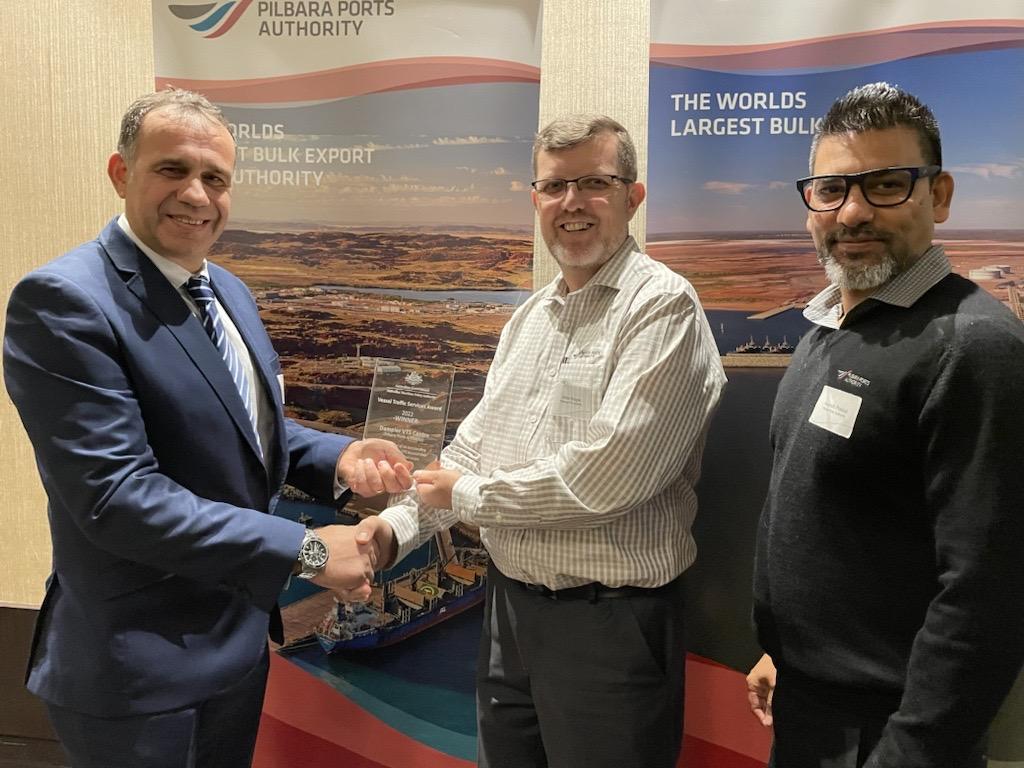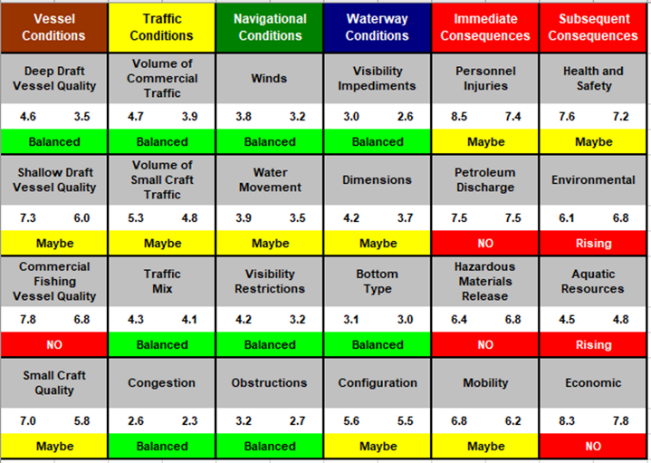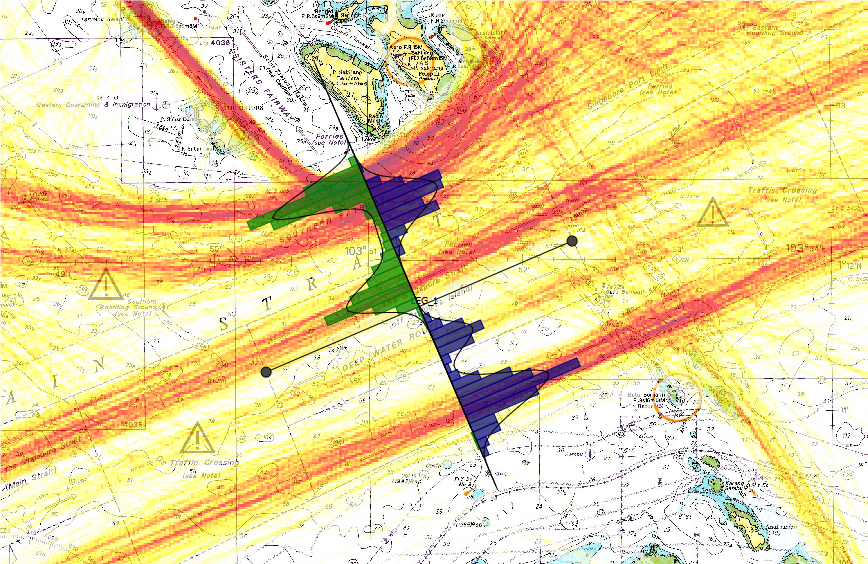Vessel Traffic Services (VTS) Award 2022
Dampier VTS has been awarded the VTS Award for 2022.

Launched in December 2019, the VTS Award is given annually in recognition of an outstanding contribution by a VTS to the safety of life at sea, safety and efficiency of navigation and protection of the marine environment which is beyond their normal operational scope.
Five nominations were received for the 2022 award. Each nomination was of a high standard, resulting in a very competitive process. Following a robust judging process and scoring of the nominations, the panel chose Dampier VTS as the successful nominee.
The Dampier VTS team demonstrated absolute professionalism in responding to 31 search and rescue operations during 2021, including 29 incidents involving recreational craft where lives were in danger, and often well outside the designated VTS area.
The team delivered effective and timely responses to crises, coordinating the response and communications with allied services, including water police, tug operators, vessels, helicopters and fixed-wing aircraft while continuing to manage shipping to ensure the safe and efficient movement of ships trading with the ports.
About the award
Nominations for the award are assessed by the VTS award selection panel - comprising representatives from Australia’s VTS providers and AMSA.
Previous winners include:
- 2021 – Ports Victoria (Melbourne VTS) for their efforts in managing several incidents unfolding at the same time which successfully resulted in no injuries, no environmental pollution and damage to property on 27 December 2020.
- 2020 - Warren Bath (Vessel Traffic Services Operator, Hay Point) for coordinating the response action of allied services - including tugs, port pilots and helicopter operators - when reports came through of a bulk carrier drifting 20 metres off the berth at Hay Point at 1am on 21 April 2019.
New / Revised International Association of Marine Aids to Navigation and Lighthouse Authorities (IALA) Documents
The 53rd session of the VTS Committee was held from 16 - 28 September 2022 at IALA Headquarters in Paris, France. This was an extremely productive final meeting for the 2018-2022 work program.
The following new and revised documents were completed, and have been forwarded to Council for approval in December:
- Revised Model Course C0103-1 VTSO
- Revised Model Course C0103-3 On-the-Job Training
- New Guideline on How to Promote Safety Culture in VTS
- New Guideline on Portrayal of VTS Information
- Revised Recommendation R0125 VTS Portrayal
- Revised Recommendation 0128 VTS Systems and Equipment
- Revised Guideline 1130 VTS information exchange with allied or other services
- Revised Guideline 1111 Establishing Functional Performance Requirements for VTS systems and equipment
- Revised Guideline 1111-1 Producing Requirements for Core VTS Systems and Equipment
- Revised Guideline 1111-2 Producing Requirements for Voice Communications
- Revised Guideline 1111-3 Producing Requirements for Radar
- Revised Guideline 1111-4 Producing Requirements for AIS
- Revised Guideline 1111-5 Producing Requirements for Environment Monitoring Sensors
- Revised Guideline 1111-6 Producing Requirements for Electro Optical Systems
- Revised Guideline 1111-7 Producing Requirements for Radio Direction Finders
- Revised Guideline 1111-8 Producing Requirements for Long Range Sensors
- Guideline 1111-9 Framework for Acceptance of VTS Systems and Equipment
Copies of the new / revised documents will be available on the IALA website in December – https://www.iala-aism.org/guidance-publications/
The Committee also finalised the task plan for the 2023 – 2027 work program, along with the associated task register describing the scope for each task.
IALA Risk Management Toolbox—training seminar
A training seminar on the use of the IALA Risk Management Toolbox is scheduled for 21-25 November 2022 in Melbourne.
The course targets those involved in the safe and efficient movement of vessels including VTS and AtoN providers, port authorities, pilotage providers, waterway managers, allied services, marine spatial planners, maritime regulators, training organisations and consultants.
The seminar provides detailed instruction, including case studies and hands-on practical use on key risk models from the IALA Toolbox.
- PAWSA - The Ports and Waterways Safety Assessment (PAWSA) is a qualitative tool that provides a structured and systematic approach to:
- identify major waterway safety hazards.
- estimate risk levels, evaluate the effectiveness of mitigation measures, and
- recommend selected measures for implementation that may to reduce risk.
Participants will be provided with the skills needed to conduct a PAWSA workshop by converting the opinions of experts with local knowledge into quantified results and how to interpret the results.
As a qualitative tool, PAWSA is exploratory and the analysis component seeks to get a deeper understanding of why a certain phenomenon occurs, its associated consequences and the potential effectiveness of additional mitigation measures.
Find more information about PAWSA in IALA Guideline 1124

- IWRAP - A Windows-based software program IWRAP, provides a standardised, quantitative method to evaluate the probability of collisions and groundings in a given waterway. It allows for different scenarios to be developed, so that changes such as those in traffic volume or composition, route geometry, aids to navigation or the introduction of other mitigating measures, can be modelled.
Participants will be able to understand the principles of IWRAP to estimate annual probabilities, to simulate changes in a waterway and evaluate the effects of these changes.
Find more information on IWRAP in IALA Guideline 1123

- SIRA - a simplified qualitative method to assess the volume of traffic and degree of risk and identify potential risk mitigation options to reduce the risks to acceptable levels. SIRA is particularly applicable where good quality AIS data, on which IWRAP depends, is unavailable or where access to individuals with the necessary experience level in the risk categories used by PAWSA is limited.
- IRMAS - a standardised approach to documenting the process of risk assessment. The use of IRMAS also develops a repository of operational risk assessments undertaken for small-scale applications.
Further information on the seminar, including a flyer and registration information is available at https://www.iala-aism.org/product/the-use-of-the-iala-risk-management-toolbox-residential-course/
Updates to AMSA’s website
AMSA’s website was updated to reflect the reissue of Marine Order 64 that came into effect on 1 July 2022.
In particular, two key policy documents have been recently revised:
Contact details |